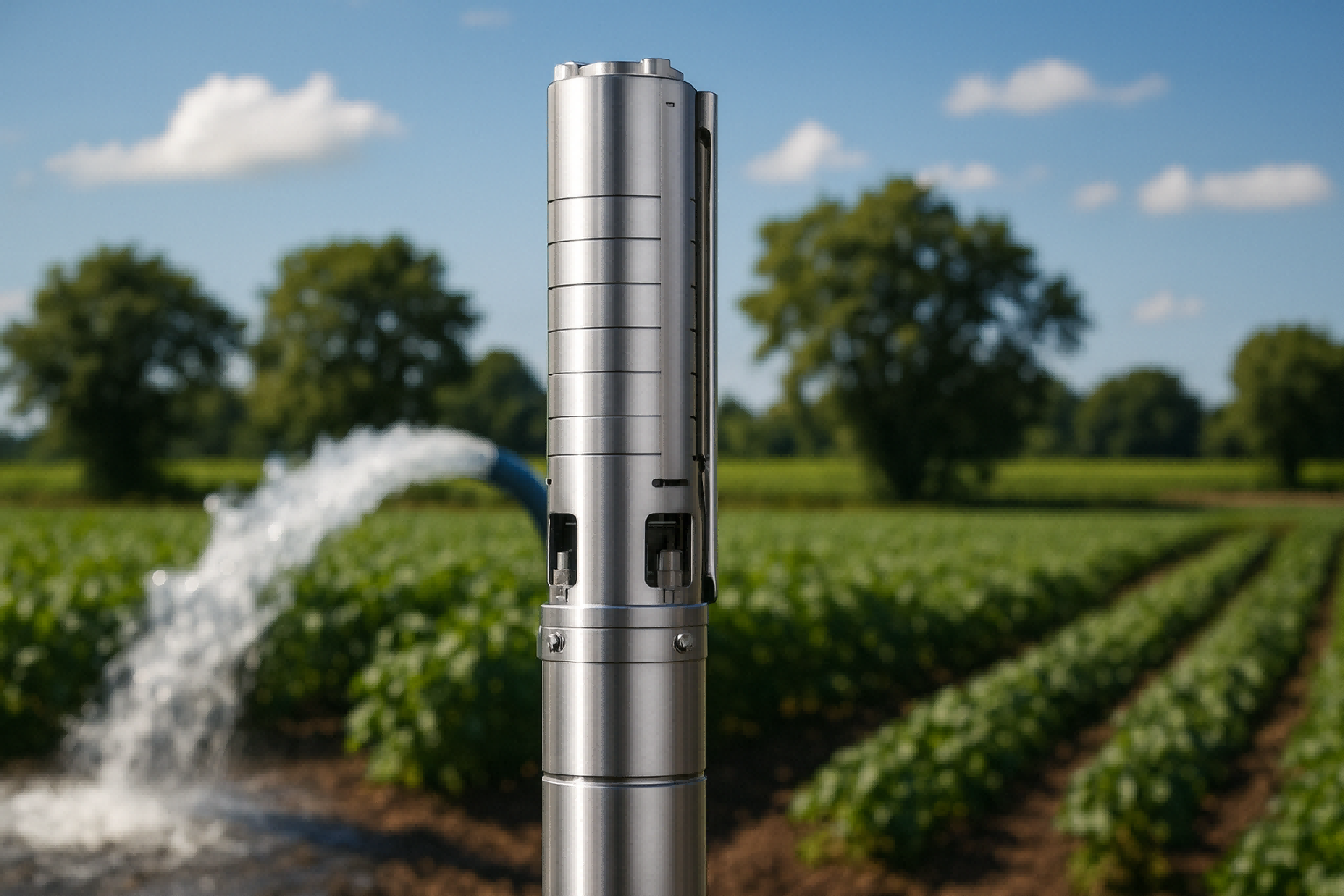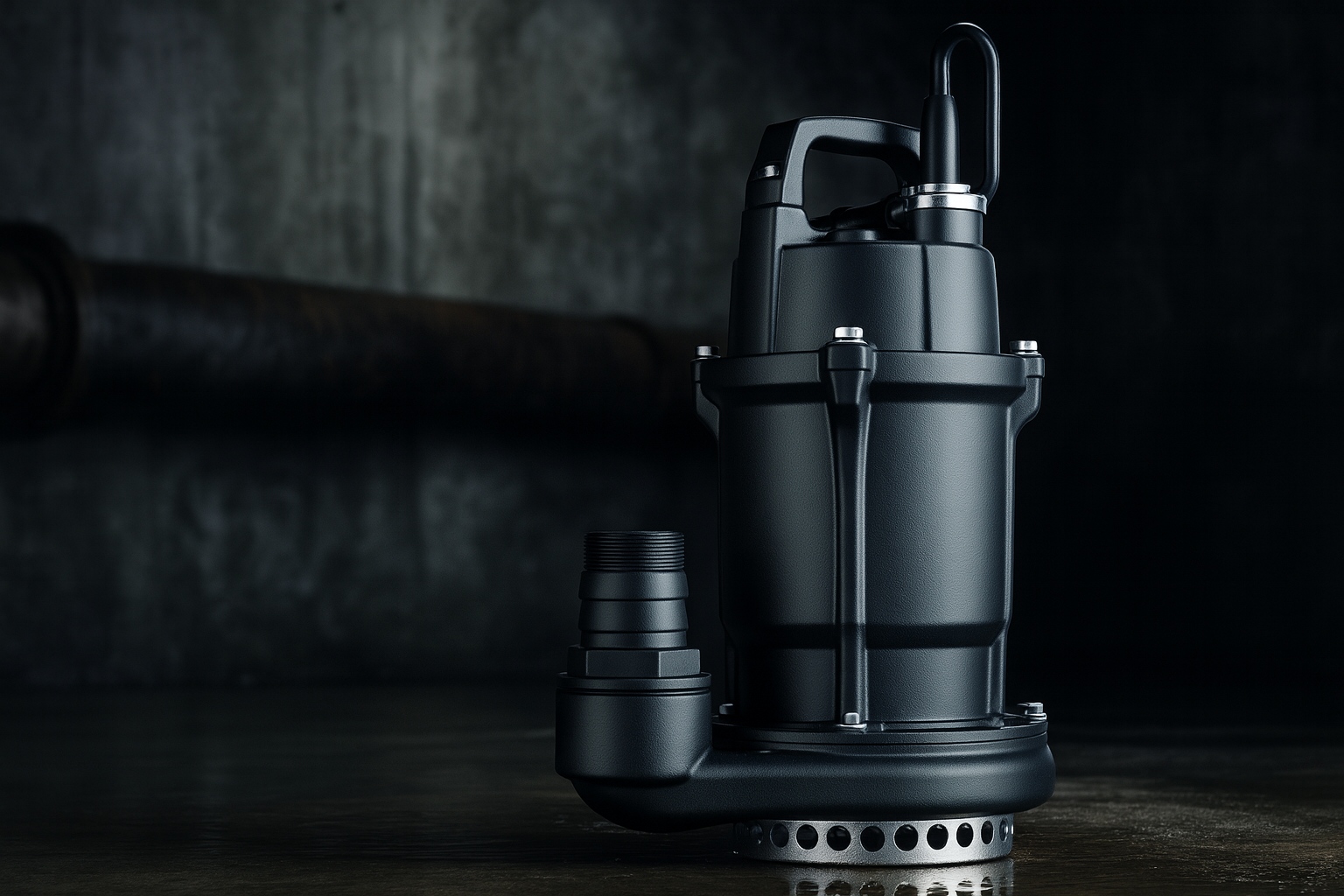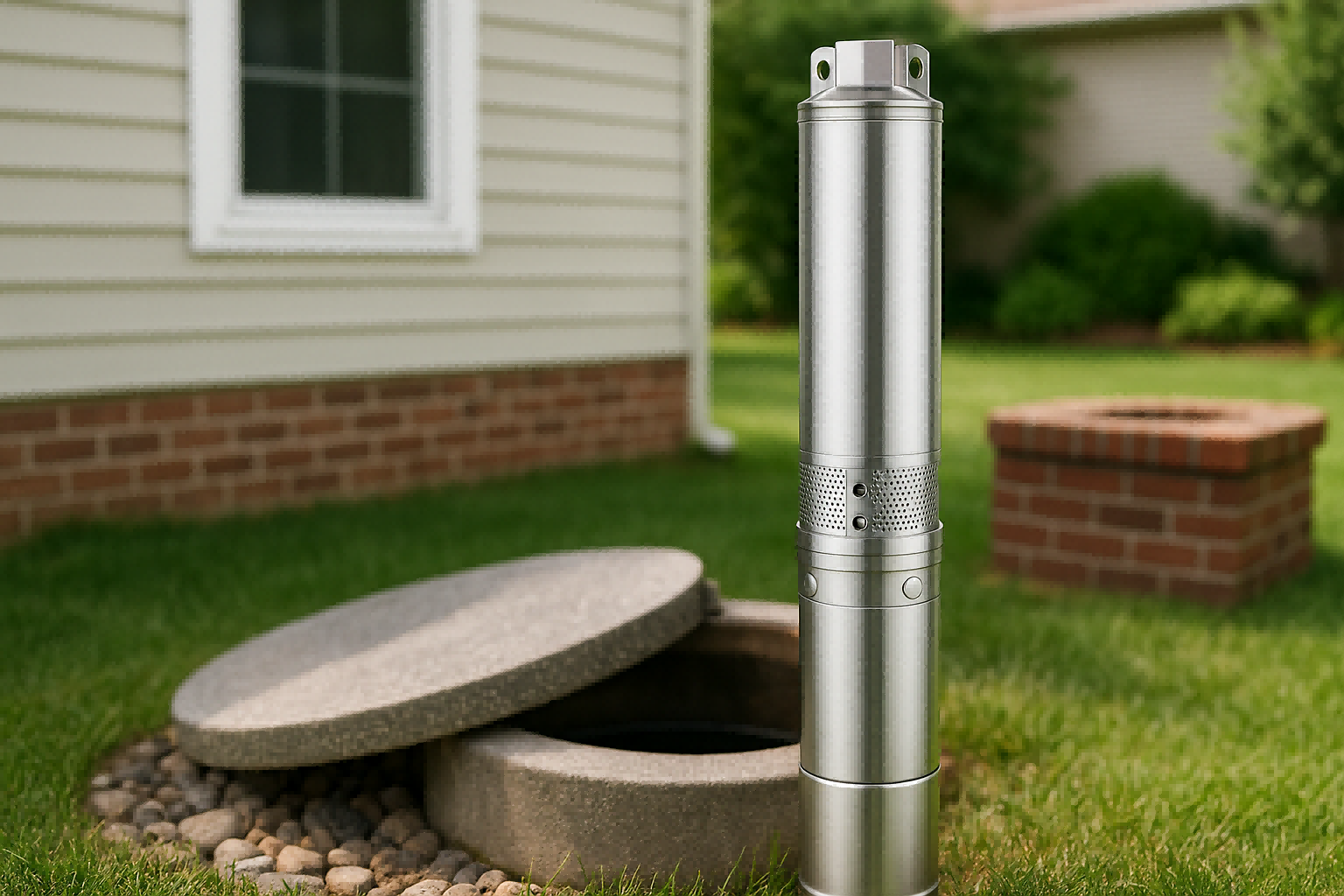Struggling with your pump choice?
An incorrect horsepower rating can cost you money and deliver poor performance.
Here’s how to choose correctly and ensure your water system works flawlessly.
A 1.5 HP pump is fundamentally more powerful than a 1 HP pump.
It provides a higher flow rate (more water per minute) and can lift water from deeper wells (greater head).
Consequently, it consumes more energy and typically has a higher initial purchase price.

Choosing a submersible pump involves more than just picking the most powerful option available.
Horsepower is a critical factor that dictates performance and efficiency.
Understanding the specific differences between a 1 HP and a 1.5 HP model is the key to making an intelligent and cost-effective decision.
This guide will break down every aspect, from raw power to long-term operational costs.
It will empower you to select the perfect pump tailored to your specific water system requirements.
Power Output: The Core of Performance
Is the concept of horsepower just a number on a label?
Choosing the wrong power leads to system inefficiency or complete failure.
Understanding what that number truly means is the first step to success.
Horsepower (HP) is a direct measure of the pump motor's work rate.
A 1.5 HP motor has 50% more raw power than a 1 HP motor.
This allows it to perform more work, such as moving a larger volume of water or pushing it against greater resistance.
Horsepower is the foundational metric from which all other performance capabilities of a pump are derived.
It represents the rate at which the motor can do work.
Specifically, one mechanical horsepower is equivalent to approximately 746 watts of electrical power.
Therefore, a 1.5 HP pump has a significantly higher power ceiling than its 1 HP counterpart.
This additional power doesn't just mean "stronger"; it translates directly into the hydraulic work the pump can accomplish.
Think of it as the engine in a car.
A larger engine can accelerate faster and haul heavier loads.
Similarly, a higher horsepower pump motor can drive the pump's impellers with more force, creating higher pressure and moving water more rapidly.
How Power Translates to Work
The motor's power is transferred to a series of impellers.
These are spinning rotors that accelerate the water, converting rotational energy into the water's kinetic energy and pressure.
A 1.5 HP motor can spin these impellers faster or drive larger impellers, creating more energy transfer to the water.
This is the mechanical basis for its superior performance characteristics, which we will explore next.
Matching Power to Your Needs
It is critical to understand that more power is not always better.
An oversized pump is an inefficient pump.
If your system only requires the work capacity of a 1 HP motor, installing a 1.5 HP model will lead to wasted energy, increased operational costs, and potentially damaging short-cycling.
The goal is to select the horsepower that precisely matches the demands of your unique application.
| Feature | 1 HP Motor | 1.5 HP Motor |
|---|---|---|
| Approx. Wattage | ~746 Watts | ~1119 Watts |
| Relative Power | Baseline | 50% More Powerful |
| Primary Function | Drives impellers to move water | Drives impellers with more force |
Performance: Flow Rate and Head
Does your water pressure drop when multiple faucets are open?
Low flow rates and insufficient head pressure can make daily tasks frustrating.
A properly sized pump solves these problems by delivering the performance you need.
A 1.5 HP pump delivers a higher flow rate (gallons per minute) and can push water to a greater height (total dynamic head) than a 1 HP pump.
This makes it suitable for deeper wells, larger homes, or irrigation systems that demand more water volume and pressure.
The two most important metrics for evaluating a pump's performance are its flow rate and its total dynamic head (TDH).
The higher horsepower of a 1.5 HP pump allows it to excel in both of these areas compared to a 1 HP model from the same product family.
However, these two factors have an inverse relationship.
The higher the water has to be lifted (head), the lower the resulting flow rate will be.
Understanding this trade-off is crucial for selecting the right pump.
Understanding Flow Rate (GPM)
Flow rate, measured in Gallons Per Minute (GPM), indicates the volume of water a pump can move.
A typical home might require 10-15 GPM for comfortable use.
A 1.5 HP pump will consistently deliver a higher GPM at any given head pressure compared to a 1 HP pump.
- For a large family: Simultaneous showers, laundry, and dishwasher use demand a high flow rate. A 1.5 HP pump is often necessary to maintain adequate pressure across all fixtures.
- For irrigation: Watering a large lawn or garden requires a sustained high volume of water. A higher GPM ensures sprinklers operate effectively.
Understanding Total Dynamic Head (TDH)
Total Dynamic Head (TDH) is the total equivalent height that water must be lifted, considering vertical distance, friction loss in pipes, and the operating pressure at the destination.
It is a measure of the total resistance the pump must overcome.
A 1.5 HP pump can generate more pressure, allowing it to overcome a higher TDH.
This makes it the clear choice for applications like:
- Deeper Wells: If your well is several hundred feet deep, a 1 HP pump may not have enough power to lift the water to the surface, let alone pressurize it for your home.
- Long Pipe Runs: Water traveling through long pipes loses pressure due to friction. The extra power of a 1.5 HP pump compensates for this friction loss over extended distances.
The Pump Performance Curve
Every pump has a unique "pump curve" chart provided by the manufacturer.
This chart is the most critical tool for selection.
It graphically shows the pump's GPM output at various levels of TDH.
When comparing a 1 HP and 1.5 HP pump from the same manufacturer, you will see the 1.5 HP curve is positioned above and to the right of the 1 HP curve, indicating superior performance across the entire operational range.
Always use this chart to find the pump that meets your specific GPM and TDH requirements.
Energy Consumption and Electrical Requirements
Worried about your electricity bill increasing?
A more powerful pump will consume more energy.
Understanding the consumption difference helps you budget for long-term operational costs and ensures your electrical system is prepared.
A 1.5 HP pump consumes more electricity than a 1 HP pump because its motor requires more power to operate.
This translates to higher energy bills and necessitates a more robust electrical circuit, often requiring a larger circuit breaker and heavier gauge wiring.
The laws of physics are unavoidable.
Doing more work requires more energy.
Since a 1.5 HP motor is 50% more powerful than a 1 HP motor, it logically follows that it will consume significantly more electrical energy to achieve its higher performance.
This increase in consumption affects not only your monthly utility bill but also the initial electrical installation requirements for the pump.
Failing to account for this can lead to tripped breakers, overloaded circuits, and even potential fire hazards.
Calculating Energy Consumption
You can estimate the difference in energy usage.
- 1 HP Motor ≈ 746 Watts
- 1.5 HP Motor ≈ 1119 Watts
While pumps don't run 24/7, this 373-watt difference is significant over time.
If a pump runs for 4 hours per day, the 1.5 HP model would use approximately 1.5 kilowatt-hours (kWh) more electricity each day.
Over a month, that adds up to about 45 extra kWh on your bill.
Modern pumps with Variable Frequency Drives (VFDs) can mitigate this by adjusting motor speed to match demand, but the principle remains: the higher horsepower pump has a higher potential energy draw.
Critical Electrical System Requirements
A higher power draw demands a more capable electrical circuit.
You cannot simply replace a 1 HP pump with a 1.5 HP model without first verifying your electrical setup.
Key Electrical Considerations:
| Requirement | 1 HP Pump System | 1.5 HP Pump System |
|---|---|---|
| Circuit Breaker | Typically a 15 or 20 Amp breaker | Often requires a 20 or 25 Amp breaker |
| Wire Gauge | May use 12 or 14-gauge wire | May require heavier 10 or 12-gauge wire |
| Voltage | Must match pump specifications (e.g., 230V) | Must match pump specifications (e.g., 230V) |
| Professional Input | Recommended | Essential |
Consulting a qualified electrician is not optional when upgrading horsepower.
They will ensure the control box, wiring from the panel to the wellhead, and the submersible drop cable are all appropriately sized for the increased amperage load of the 1.5 HP motor.
An undersized circuit will cause the motor to struggle, overheat, and fail prematurely.
Cost: Initial Investment vs. Lifetime Value
Thinking a more powerful pump is always a better investment?
The upfront cost is only part of the equation.
A mismatched pump can lead to higher lifetime costs through wasted energy and premature replacement.
A 1.5 HP submersible pump has a higher initial purchase price than a 1 HP model.
While it provides greater performance, its higher energy consumption also leads to increased long-term operational costs. The best value comes from choosing the pump that correctly matches your needs.
When budgeting for a new submersible pump, it's easy to focus solely on the sticker price.
Naturally, the more powerful 1.5 HP pump, with its larger motor and more robust components, will carry a higher initial cost than its 1 HP counterpart.
However, a smart investment analysis looks beyond the purchase price to consider the total cost of ownership over the pump's entire lifespan.
This includes the initial investment, installation costs, ongoing energy expenses, and potential maintenance or replacement costs.
Breaking Down the Total Cost of Ownership
The true cost of your pump is a long-term calculation.
An oversized 1.5 HP pump in a low-demand system is a poor investment.
Conversely, an undersized 1 HP pump that runs constantly and fails to meet your needs is also a bad choice.
- Initial Cost: The 1.5 HP pump and its potentially required electrical upgrades (heavier wiring, larger breaker) will cost more upfront.
- Operating Cost: The 1.5 HP pump will consume more electricity. If this extra power is not needed, you are paying for wasted energy every month. This can quickly erase any perceived value from having a "stronger" pump.
- Maintenance & Lifespan Cost: A correctly sized pump operates within its optimal efficiency range. An oversized pump may short-cycle (turn on and off frequently), causing excessive wear on the motor, control switch, and pressure tank. This leads to premature failure and replacement costs, negating the initial investment entirely.
Achieving the Best Lifetime Value
The most cost-effective choice is the pump that works efficiently for your specific application.
- Choose 1 HP if: Your well is relatively shallow, your home is smaller, and your water demand is moderate. It offers lower initial and running costs, providing excellent value for the right system.
- Choose 1.5 HP if: Your well is deep, you have a large home with high water demand, or you need to run an irrigation system. The higher cost is justified because it is the necessary tool for the job, providing reliable performance that a 1 HP pump cannot.
The concept of value is not about spending less; it's about spending wisely.
The best value is achieved by investing in the pump horsepower that meets your performance requirements without exceeding them.
This ensures optimal energy efficiency, maximum lifespan, and the lowest possible total cost of ownership.
Application: Choosing the Right Tool for the Job
How do you know which pump is right for you?
Guessing can lead to poor pressure or a burned-out motor.
Matching pump horsepower to your specific application is the only way to guarantee a reliable and efficient water system.
A 1 HP pump is suitable for shallower wells, smaller homes, or systems with moderate water demand.
A 1.5 HP pump is necessary for deep wells, large homes with multiple bathrooms, farms, or extensive irrigation systems that require high flow rates and pressure.
The final and most important step is to synthesize all this information and apply it to your real-world situation.
The choice between a 1 HP and 1.5 HP pump is not about which one is "better" in a vacuum; it's about which one is the correct engineering choice for a specific set of demands.
Installing the wrong size pump is like using a screwdriver to hammer a nail—it might work poorly for a short time, but it will ultimately fail and cause damage.
Let's break down the typical applications for each size.
Ideal Scenarios for a 1 HP Submersible Pump
A 1 HP pump is a capable and efficient workhorse when placed in the right environment.
It is the ideal choice for systems with moderate demands.
- Shallow to Medium Depth Wells: Typically for wells under 250 feet deep, where the pump doesn't have to fight as much gravity.
- Standard Homes: Suitable for homes with 1-2 bathrooms and moderate water usage patterns.
- Small-Scale Irrigation: Perfect for watering a garden or a small lawn.
- Cost-Conscious Installations: When system demands are met, the lower initial and operational costs make it the smart financial choice.
When to Step Up to a 1.5 HP Submersible Pump
The additional power of a 1.5 HP pump is not a luxury; it is a necessity for high-demand applications.
You must choose a 1.5 HP (or higher) model when the system's requirements exceed the capacity of a 1 HP pump.
- Deep Wells: Essential for wells deeper than 250-300 feet, where the TDH is high.
- Large Homes & High Usage: Necessary for larger homes with 3+ bathrooms, multiple occupants, and high-flow fixtures like spa tubs or multi-head showers.
- Farm & Livestock Operations: Provides the high flow rate needed for filling stock tanks and cleaning operations.
- Large Irrigation Systems: Required to operate multiple sprinkler zones simultaneously and cover large areas of land.
- Constant Pressure Systems: Modern constant pressure systems using a VFD often pair well with a slightly more powerful motor to handle peak demand flawlessly.
| Application Factor | 1 HP is a Good Fit | 1.5 HP is Necessary |
|---|---|---|
| Well Depth | < 250 feet | > 250 feet |
| Home Size | 1-2 Bathrooms | 3+ Bathrooms |
| Water Usage | Low to Moderate | High / Simultaneous Use |
| Irrigation | Small Garden / Yard | Large Lawn / Multiple Zones |
Ultimately, a professional well technician or pump installer can perform a detailed analysis of your system.
They will calculate your TDH and peak GPM demand to definitively recommend the correct horsepower, ensuring your water system is reliable, efficient, and built to last.
Conclusion
The primary difference is power.
A 1.5 HP pump moves more water and pushes it higher than a 1 HP pump, but this performance comes at a higher initial and operational cost.
FAQs
What is the main difference between 1HP and 1.5 HP?
A 1.5 HP motor has 50% more power. This allows it to deliver a higher water flow rate and pump from deeper wells than a 1 HP motor.
Can I replace a 1 HP pump with a 1.5 HP pump?
Yes, but you must verify that your electrical wiring, circuit breaker, and control box are rated for the higher amperage draw of the 1.5 HP motor.
Is a 1.5 HP pump better than 1 HP?
Not necessarily. It is only "better" if your system requires its higher performance. For a smaller system, a 1 HP pump is more energy-efficient and cost-effective.
How many gallons per minute can a 1.5 HP well pump?
This varies by model, but a 1.5 HP pump might deliver 15-25 GPM or more, depending on the well depth and system pressure. Always check the pump's performance curve.
How deep will a 1.5 HP pump push water?
A 1.5 HP submersible pump can often work effectively in wells several hundred feet deep, well beyond the typical range of a 1 HP pump.
Does a higher HP pump use more electricity?
Yes, a higher horsepower motor consumes more electricity to produce more power. A 1.5 HP pump will result in a higher electricity bill than a 1 HP pump.
How do I choose between 1 HP and 1.5 HP?
Calculate your system's required flow rate (GPM) and total dynamic head (TDH). Select the lowest horsepower pump that meets or slightly exceeds these requirements for maximum efficiency.
What happens if my pump HP is too big?
An oversized pump will short-cycle, turning on and off rapidly. This causes excessive wear on the motor and controls, wastes energy, and leads to premature failure.








